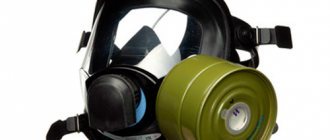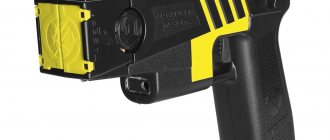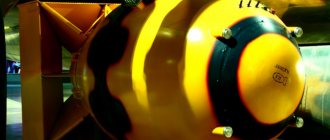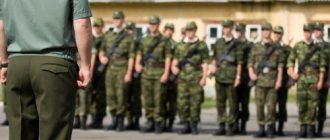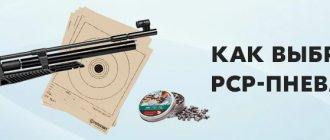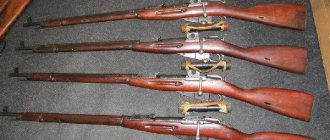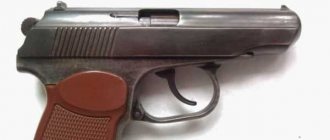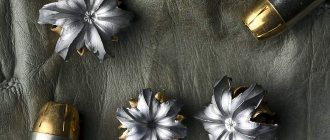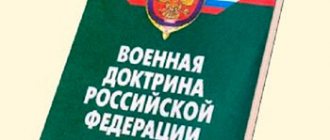Caps are a men's headdress with a visor, a flat bottom and a hard, wide band.
Previously, caps were called caps , which began to fall out of use with the advent of Soviet power in the country and the beginning of the time of atheism, when a covered head and the presence of a belt became optional for men, i.e. There was a change in the culture of a certain external appearance. Caps went out of widespread use before the Great Patriotic War.
The classification of caps is given according to the sixtieth year.
Caps were divided into civilian and uniform; were for adults and children.
Civilian cap
Civilian caps for adults were produced - from No. 53 to No. 62; Caps for boys of school age in seven sizes - from No. 50 to No. 56; for boys of preschool age in five sizes from No. 47 to No. 51.
Children's cap
Uniform caps for children and teenagers were produced in sizes 49 to 56; for adults - from 52 to 61. Uniform caps were divided into military and departmental, including for students. Military caps, in accordance with the uniform, were available for: ground forces, air force, border guards, navy and river flotillas, police and paramilitary guards.
Military cap
Cap for Navy officers
Cossack caps were a special type of military cap.
Caps for petty officers, conscript sailors and students of the Nakhimov naval schools were made without a visor, chin strap and buttons (peakless cap), with a naval rep silk ribbon, with the name of the fleet or crew inscribed in gold letters and an image of a golden anchor at the ends.
Peakless cap
Departmental caps were installed for workers of railways, water and air passenger transport and some others, for students of secondary schools, vocational and special schools and some higher educational institutions. Caps of various types were introduced by individual organizations for their employees: hotel staff, city transport workers, porters, etc.
Civilian caps were made of wool (cloth, cheviot, tights, drape), cotton. (from matting, pique, bouclé), silk (from comb), linen (from linen, canvas) and less often leather, fur, straw, knitted and others. On the top of the caps for officers there was pure wool cap fabric (sample 11128 BTU MO 275-59 / TK 2835) for marshals, generals and officers - pure wool gabardine article 1511; for other military personnel - cap cloth article 852. Based on the type of visor, caps with a varnish visor and with a visor made of the main material were distinguished. In summer uniform caps, white fabric was often used for the top. In this case, removable covers were made from it so that they could be washed. The cap set included two covers.
The main parts of the cap are: the top (head), band and visor. The top consists of a flat bottom and sides, made up of four arched parts - quarters. The bottom has the shape of a slightly elongated ellipse (the difference in the lengths of the semi-axes is from 2 to 10 mm); It was made of three layers: a top made of the main material, a lining called the “circle”, and an intermediate pad that provided some rigidity. A brand was printed on the lining in the middle, sometimes it was covered with cellophane, or a diamond-shaped lining made of moisture-resistant material (potnik) with a brand was sewn on. In uniform caps, a narrow colored (established color) edging was laid between the bottom and the band; in civilian caps, the seam between the bottom and the bevel was usually without an edging or with an edging (edging) made of the main fabric from which the top of the cap was made. Various gaskets were provided inside the side walls between the quarters of the base material and their lining to ensure stability of the shape of the cap. The main ones were racks that supported the front of the cap in a raised state, while the back was lowered, and a ring frame made of a thin narrow (1-8 mm) metal or plastic strip (or wire), which ensured the stability of the edges of the bottom. There are two stands: large (wide, almost the entire length of the visor) and small (narrow, high, placed in the middle of the front). The band (also called the band and the band) was made more or less rigid and carried a top and a visor. The rigid frame of the peg was a strip of cardboard, most often covered with canvas. The outer side of the band was usually covered with the same material from which the top was made; in uniform caps it was often of a different color or made of a different material - colored velvet; trimmed with grosgrain ribbon. The inner side of the band was formed by a gasket; A forehead protector was sewn to it along the lower edge - a sweat-protective strip made of leatherette or lederin. On the front side of the band, above the visor, there was a strap (made of leather, varnish oilcloth or main fabric) with two buttons at the ends and decorative loops in front of them, a decorative double twisted cord or a double strap that could be pulled apart and pulled down under the chin. Cockades, emblems, and coats of arms are attached to uniform caps.
History of the cap
In the past, this product was called a “fodder hat.” It was used as a uniform headdress in the armed forces and departments of many countries.
Forager soldiers, whose duties included procuring food and fodder (animal feed), wore characteristic practical colorful hats with a band.
Such products resembled modern models only by a band.
Reference! From a historical point of view, the cap is recognized as a modified version of the army shako (a hat that had a high and impractical shape, which was used by infantrymen and cavalrymen of the armies of Europe and America during the Napoleonic era). Until the middle of the 19th century, the shape of the shako gradually decreased, eventually coming as close as possible to the modern look of the cap. For different branches of the military, they began to make products of different colors with the addition of stripes.
Cap in the Russian army
Items of this kind began to be used as headdress in the Russian army during the reign of Paul I (at the end of the 18th century) . Such an attribute of this product as a cockade appeared already in the 19th century. In the same period, other characteristic distinctive features appeared (for example, emblems of military branches), after which this product acquired a look that most closely corresponds to modern ideas about it.
In the troops of the Russian Empire, a headdress of this kind was classified as a separate category of clothing items for troops - uniform items . These hats were made in regimental workshops. These products were released in the form of materials and each time for a clearly defined period.
Reference! The Tsar's decree of September 23, 1811 introduced a soldier's cap with a round crown, but despite this, such hats were made without this detail for almost 100 years.
Forage hat
Probably because service workers most of all needed a practical headdress, the cap first appeared among foragers. From the soldiers who brought food and weapons on convoys. The crown was reduced, but the visor was also removed. The result was something like a round hat, but the name “cap”, from the word “forager”, stuck with the headdress.
Caps without a visor appeared in the 18th century under Paul I. And only for dragoons and cyclists they were spectacular - with a visor and a high crown. But not as high as the shako.
And only in 1907 the army was transformed. The soldiers dressed in khaki uniforms and caps with a visor. Variations on the theme of the cap remain - this is a cap for sailors, and also a cap. In fact, a cap is a type of simple cap, without a visor.
Components of a cap
Each headdress of this kind consists of the following elements:
- cockade (fabric or metal distinctive badge located in the central part of the band);
- welt (a twisted decorative cord located above the visor or a belt fastened under the chin, which is used to avoid losing the cap in the wind);
- visor (visor fixed above the face horizontally or tilted down);
- edging (edging running along the top of the band);
- band (a headband tightly clasping the head from 3 to 5 cm);
- flat or rounded crown (the main part of the product);
- steel hoop (reinforcing insert designed to maintain the appropriate shape of the product);
- cases (accessories used to store such hats).
Types of caps
According to their purpose, such headdresses are usually divided into field, everyday, ceremonial and ceremonial weekend hats .
The main types include:
- cap - a civilian version for warm weather, having a large crown and a high band (used in 1930-40 among political workers and government agencies);
- field cap - a uniform headdress intended for use in the field (made from khaki-colored material without the use of reinforcing inserts);
- visorless - a cap that does not have a visor (it was used and continues to be used in the navy).
Such products may differ in the color of the fabric of the top, piping, band and in the design of the band and walls of the product.
Where is the cap used now?
At the end of the last century, women also began to use this item, since the main emphasis in the fashion trends of the 70s was placed on elements of the men's wardrobe.
Therefore, in addition to the traditional uniform men's caps, women's models began to appear. In the modern world of fashion, women's cap models primarily belong to the youth wardrobe.
Representatives of the fair sex appreciate the cap primarily because the classic, strict form of this headdress softens the facial features, making the image more expressive regardless of age. The uniform cap has gone through a lot of transformations due to the need to adapt this headdress to different types of troops and apply it to it various decals and colors.
By the shape, color and characteristic icons you can always find out who the owner of this thing is. Cap
- headdress.
Previously called " forage hat"
"and was a uniform headdress in the armed forces and departments of various states.
Evolution of the cap
The cap also migrated to the Red Army - it was so convenient to attach a red star or a red band to it. Later, emblems of different branches of the military appeared on the cap.
What happened was that caps were worn askew and this was considered brave. There was also a fashion for soft caps, without a frame in the crown. However, “fashion” is the wrong expression in relation to the army. The initiative simply came from some general, and the caps changed.
Even today this happens. Sergei Shoigu abolished the traditional caps with a wide top and introduced more compact ones. It turned out that the military did not really like the “aerodrome” caps.
And in the summer they put light covers on their caps so that the sun would be less hot. And this case became the prototype of the beret.
Interesting Facts
The old drill song of Russian cadets “Forage Cap” is dedicated to this headdress (text, listen)
Pavel Emelyanovich Kupriyanov
Sergey Ivanovich Gritsevets
Chairman of the Joint Chiefs of Staff General Nathan Twining wearing an officer's uniform cap
Wikimedia Foundation. 2010.
See what “Cap” is in other dictionaries:
CAP - CAP, caps, women's. (Polish: furazerka). A headdress with a wide band and a visor. Uniform cap. Student cap. Ushakov's explanatory dictionary. D.N. Ushakov. 1935 1940 ... Ushakov's Explanatory Dictionary
CAP - (Polish furazerka, in connection with the military French fourrage, fourrager). Flat hat with or without a visor. Dictionary of foreign words included in the Russian language. Chudinov A.N., 1910. CAP Polish. furazerka, from French. fourrage, collect forage.... ... Dictionary of foreign words of the Russian language
cap - cap, headdress, midshipman, confederate, policeman, kapelyukh, cap, cap, kepi, cap Dictionary of Russian synonyms. cap noun, number of synonyms: 14 • cap (7) • ... Dictionary of synonyms
cap - and, f. fourrageur > German Furagiermütze > floor furazerka, Russian fodder hat. Hat of a famous cut. Dahl. Men's headdress with band and visor. BAS 1. A headdress worn when foraging. Vasmer. They were captured in Moscow... ... Historical Dictionary of Gallicisms of the Russian Language
cap - CAP, obsolete. cap cap, outdated. capricious ... Dictionary-thesaurus of synonyms of Russian speech
CAP - a headdress with a band and a visor ... Big Encyclopedic Dictionary
CAP - CAP, and, female. Men's headdress with a hard band and visor. Uniform f. Officer f. | adj. forage, oh, oh. Ozhegov's explanatory dictionary. S.I. Ozhegov, N.Yu. Shvedova. 1949 1992 ... Ozhegov's Explanatory Dictionary
cap - CAP, i, m. and f., FURAZHKIN, a, m. Policeman. Here Comrade Furazhkin is vigilant... Dictionary of Russian Argot
cap - Sewing headdress for men and boys with a visor and a hard band. [GOST 17037 85] Subjects: sewing and knitwear General terms headdresses ... Technical Translator's Guide
cap - noun, f., used. compare often Morphology: (no) what? caps, what? cap, (I see) what? cap, what? cap, about what? about the cap; pl. What? caps, (no) what? cap, what? caps, (I see) what? caps, what? caps, about what? about caps 1.… … Dmitriev’s Explanatory Dictionary
The cap, the history of its appearance and changes in its appearance in the context of history
A cap is a headdress with a flat brim, a wide hard band and a visor (or without it); in Russia it was originally an exclusively military headdress, descended from the shako.
The shako in the Russian Empire was most common in the 19th century. It looks like a cap and had a lot in common with it, but its main difference is that it is much taller, sometimes it reached a height of up to 73 cm. At parades, the shako looked brilliant, making soldiers and officers visually taller. Oh, brave hussars!!!
But there is no need to talk about convenience. It is heavy, not stable on the head, and therefore its height gradually decreased and at the beginning of the 20th century the shako in Russia was finally replaced by a cap.
Let us consider in detail the origin of the word “cap”. One of the means of transportation for any army, including the Army of the Russian Empire, was horses. To provide them, military personnel were required with the responsibility of purchasing “fodder” for horses, as well as caring for them. For these purposes, the position of forager officer was introduced. It is not difficult to guess that it is very inconvenient to do such work in a shako. In 1811, a headdress for the forager officer was introduced - the Cap.
They wore a cap for almost a hundred years without visors. It was a non-combatant headdress. Only in some parts of the Russian army (bicycle and dragoon) in the 1890s. introduced caps with a visor of the familiar look to us, combining the advantages of peakless caps and spectacular shakos with visors.
In 1907, in the Army of the Russian Empire, khaki uniforms were introduced; a cap with a visor for officers and lower ranks of the bulk of foot units became a mandatory headdress. And caps remained for sailors and foremen of the navy.
| Officer's marching cap sample 1907 | Military cap for lower ranks of RIA sample 1907 |
In the first years after the revolution, the Red Army used caps and other headdresses left over from the Army of the Russian Empire. There has not yet been a law on strict uniforms for military branches.
In 1924, a summer cap was approved for all branches of the military. It was sewn from linen camping tent fabric or cotton camping tent fabric of khaki color, impregnated with a chemical waterproof compound. The visor and chin strap were made of the same material as the cap. In front, in the middle of the band, a Red Army badge-cockade - a red five-pointed star - was attached to the stitching seam.
The cap of the 1924 model subsequently underwent a number of changes. The samples from 1928 and 1935 deserve the greatest interest. The sample cloth cap of 1928, established by order of the USSR Revolutionary Military Council No. 31 of February 4, turned out to be perhaps the only one in our country in which ventilation holes were provided on the sides of the crown - two on each side. And the caps introduced on December 3, 1935 by order of the NKO of the USSR No. 176 received a varnished angular visor of an elongated shape, which is sometimes called either “Voroshilovsky” or “spade visor.” In the cloth cap of the 1935 model, the pre-revolutionary tradition was partially revived - the band and piping began to correspond to the prescribed branch of the military or service color. Later, the colors, of course, changed, but the principle remained until the end of Soviet power.
| Red Army Air Force cap mod. 1935 | Border guard cap mod. 1935 |
| Cap of the NKVD troops, model 1935. | Red Army infantry command cap arr. 1935 |
Cap: history and varieties
- headdress, mainly for men. Previously it was called a “forage hat” and was a uniform headdress in the armed forces and departments of various states.
Historically, the cap was a development of the shako, whose awkward high shape in the uniforms of European armies until the mid-19th century was gradually reduced to the modern cap shape.
In the armed forces of the Russian Empire, soldiers' caps belonged to a special category of clothing items for troops - uniform items. The cap was sold in the form of materials and always for a certain period. Made in regimental workshops. The cap was introduced in 1811 to replace the caps of 1797, which had the appearance of a cap bent in half, and was first made from worn-out uniforms. The cut of the cap changed several times. In 1862, the cap was abolished for everyone except cuirassiers.
In 1872, caps were returned to the guards, cavalry, Cossacks and all officers. In 1881, the cap was returned to the entire army, in the guards and cavalry with a cockade on the band , and in the army - on the crown, for non-combatants - with a visor and a cockade on the crown. In Russia in the 19th century, on uniform caps on the bands there was a cockade and/or emblem of the type of weapon (badge), engineering specialty, and so on. An additional sign could be placed on the crown. In summer, a white cover was put on the cap.
In 1906, a khaki summer cap with a visor and external chin strap was introduced for everyone. In 1910, a traveling cloth cap was introduced instead, and the outer belt was abolished in the infantry.
In the Armed Forces of the USSR since 1969, the cap for officers consisted of:
— the bottom is oval-shaped (the cap for officers of the Navy was additionally equipped with a removable white cover); crown; - band; - edging along the upper edge of the band and along the edge of the bottom; — ribbons (black, for a cap for officers of the Navy); - a visor (in some cases there was an ornament on it); - braided cord (on the field cap there was a chin strap instead); - emblems (sewing) (to whom it is due); - cockades; — uniform buttons (two).
Caps
Why is the cap a particularly important part of the military uniform? There is a joke in the army: because without a military cap there is nothing to put your hand on to salute. But speaking seriously, a uniform cap gives a certain completeness, completeness to the appearance of a serviceman, makes him stricter and at the same time ennobles his appearance. And if such headdresses as caps, baseball caps, Panama hats, being the standard clothing of a serviceman, can, depending on the type of troops, vary in shape, then the cap has a classic shape, worked out so well that, as they say, it can neither be subtracted nor added. That is why the caps of all branches and types of troops, various law enforcement agencies of the Russian Federation are absolutely identical in design (with the exception of Cossack and naval caps, called peakless caps), and differ from one another only in cockades and emblems, as well as the color of the components - the bottom, band, crown, welt and piping. Therefore, in everyday life, for simplicity, they are called by color. For example, a green cap (border guard's cap) or a white cap (sea captain's cap) and so on. So, despite the same classic shape, military caps are very, very different. You can see them all together at some military costume exhibition. But such exhibitions happen rarely, and not everyone can attend them.
HOWEVER, THERE IS A PLACE WHERE YOU CAN SEE THEM ALL TOGETHER ANY DAY FROM 9 AM TO 9 PM.
Yes, perhaps, only here and nowhere else can you see (and most importantly, not only see, but also buy) an almost complete set of all statutory uniform caps used in the Russian Federation. The border cap is next to the captain’s cap, the officer’s cap and the soldier’s cap, the General Prosecutor’s Office cap and the Investigative Committee cap. This place is the showcase of the military uniform and equipment store “Tilovik”. More precisely, one of the six Moscow stores of the Tylovik wholesale and retail trading network.
DO YOU NEED A UNIFORM MILITARY CAP?
No problem. Go to any of these military stores and choose what you need. There is everything here: police caps, Ministry of Defense caps, Air Force caps, Navy caps, other types and branches of the military. However, this does not exhaust the range of authorized uniform caps available for sale in the windows of Tylovik. The fact is that, as we have already said, exactly the same (but only different in color) hats are worn by employees of various government security departments. And they are also frequent guests and active buyers here. That’s why here, in Tylovik, next to the cap of, say, an artilleryman or a naval sailor’s cap, you can see other headdresses of completely different government agencies. For example, the Ministry of Emergency Situations cap, the FSB cap, the FSO cap, the SVR cap, the FSIN cap, the FSKN cap, the Federal Customs Service cap, the Customs cap, the Fireman’s cap, the traffic police cap, the traffic police cap, and so on.
Of particular interest to lovers of Russian history, as well as collectors (there are quite a lot of people in Russia who collect collections of military headdresses) are caps from our not so distant past. For example, caps made in exact accordance with those worn by soldiers of the Red Army (Workers' and Peasants' Red Army) will remind you of the years of revolution and civil war. In general, caps from the USSR era occupy a fairly significant place in the Tylovik assortment. General military caps, naval caps, flight caps, police caps, KGB caps, USSR Internal Troops caps, and so on and so forth. Therefore, people for whom the past, Soviet times are memorable and close to their hearts, can make a trip to the Tylovik military store and, perhaps, buy something as a souvenir.
WELL, IF A PERSON WANTS SOMETHING VERY SPECIAL, HE CAN MAKE AN ORDER FOR CUSTOM CUSTOM CAPS.
Recently, employees of one of the film studios contacted Tylovik. They urgently needed one and a half hundred White Guard caps. The order was accepted and completed very quickly. From the above it is clear that there are many people who want to purchase uniform statutory caps. We are not talking about the military here - they, of course, know where to buy them. But thousands of members of historical, military-patriotic clubs and similar associations, museum employees, and participants in military-historical reconstructions may simply not know about this. Especially people located far from the capital may not be aware that in Moscow there is a large wholesale and retail trade network “Tylovik”, where all this can be purchased, including on the Internet. But now you know everything. Contact us. You will be welcome!
